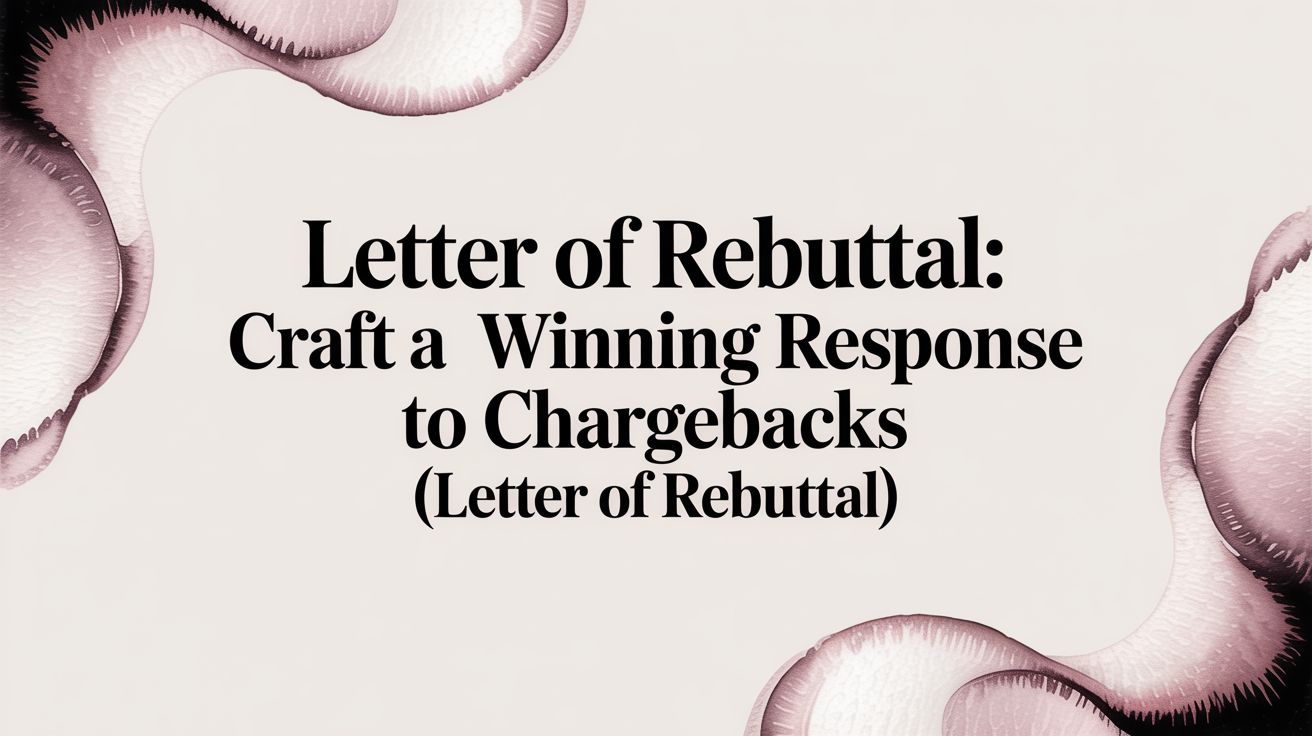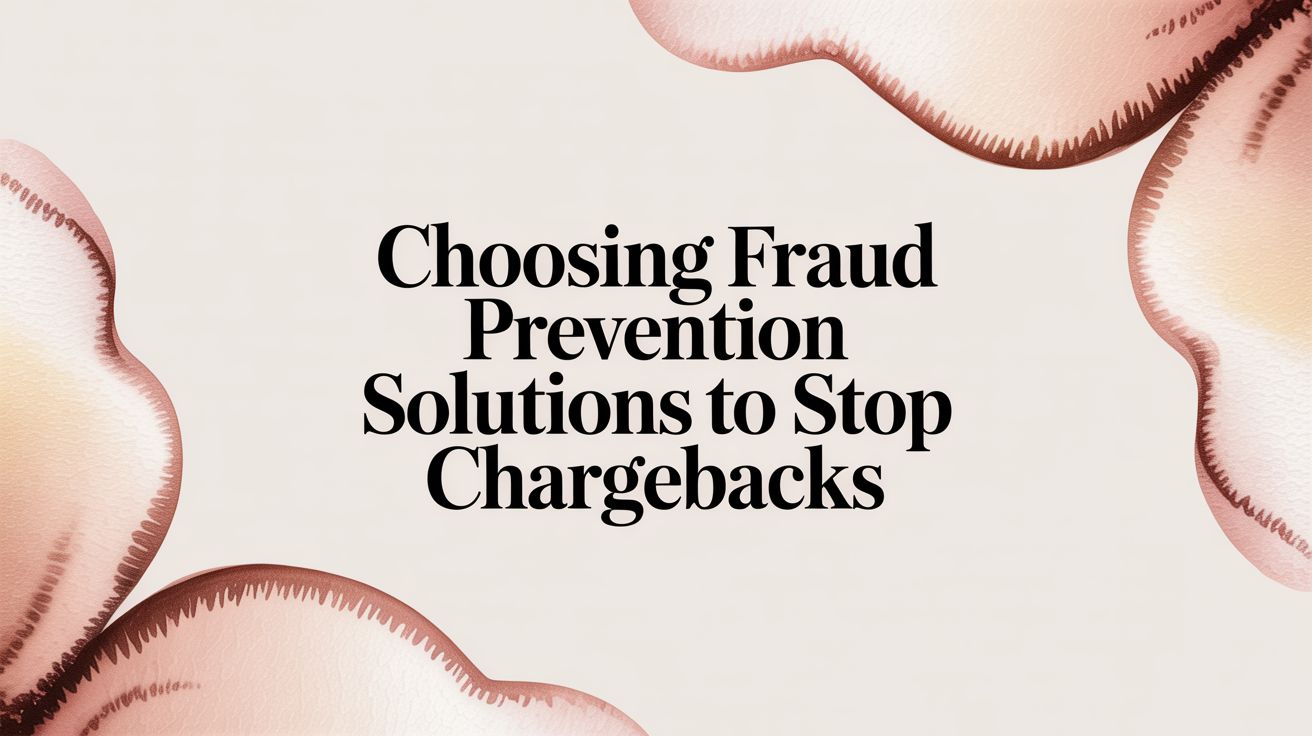
Chargebacks are a financial burden for any business, done via a card issuer, an issuing bank, or PayPal.
PayPal is one easy channel for payments, but not so much when it comes to chargebacks. As easy as the process of making payments is, the process of dealing with chargebacks is complex. There are a bunch of charges, terms, and rules for handling chargebacks exclusive to PayPal, and merchants must be aware of them.
Being aware can help you save business revenue, which otherwise gets lost in chargebacks. Because chargebacks have a direct impact on your business’s bottom line, dealing with them should be your priority.
This article guides you through the route to dealing with PayPal chargebacks. Get ready to learn the correct process for fighting and preventing chargebacks on PayPal.
Why do you need to handle PayPal chargebacks?
Chargebacks generally are a revenue loss and come with additional fees to execute the resolution process, often borne by a merchant.
However, there’s more to it when PayPal chargebacks are a concern. The platforms take into account each of the chargebacks a merchant receives and record them to determine chargeback percentages. Any negative implications reflect on your ability to accept payments on PayPal. PayPal sets account limitations on merchants with a high chargeback percentage and can even cease operations for such accounts.
Hence, handling and keeping your chargeback percentage in check is extremely critical for your business if you want to enjoy uninterrupted payments from PayPal.
Is the PayPal chargeback process different?
PayPal has an integrated process to address chargebacks, which customers can choose. Otherwise, customers also have the option to file a chargeback request with the issuing bank. Customers who are unsatisfied with PayPal’s resolution center may as well choose to raise it with the issuing bank.
Generally, PayPal encourages customers to resolve their grievances through their resolution center. When done, PayPal notifies the merchant about it and facilitates communication between the buyer and seller, helping them arrive at a solution.
On the other hand, when a customer contacts the issuing bank about a transaction, it turns into a chargeback. Here, the request is escalated to PayPal, which acts as the intermediary representing you, the merchant.
If your customers choose to chargeback a transaction with the issuing bank, you have to pay their chargeback fee. On the other hand, if a transaction is disputed via PayPal’s resolution center, you have to pay PayPal’s dispute fees, which vary by country.
What is PayPal seller protection program?

There’s a nonrefundable fee attached with a chargeback that the merchant is obligated to pay. Even if the chargeback is filed for an illegitimate reason, the seller will have to bear the fee nonetheless. To protect sellers from such a practice, PayPal has launched the seller protection program.
This program allows certain cases and instances to receive a charge waiver. Merchants who are duped into a chargeback will not have to pay the chargeback fee under the seller protection program. If you want to get this protection, you need to abide by a bunch of requirements set by PayPal. One such example is having a solid proof of delivery for products that were claimed to be undelivered in a chargeback.
Not every chargeback reason is covered under the plan. So, merchants must make constant efforts to stay compliant with the program to avail themselves of the protection.
The good news is that it doesn’t matter if a chargeback was raised through PayPal’s resolutions center or issuing bank; sellers are protected under this program.
How can you fight PayPal chargebacks?
Chargebacks mean exponential efforts on your company’s financial and human resources. At times, what you invest in fighting a chargeback may be greater than your recovery. Such instances are best left defeated. You must first evaluate which cases are worth fighting for and then follow the following steps:
1. Respond on time
If you accept a chargeback, you lose your revenue. But if you choose to fight it, you must follow their timelines for responses and the format of responses to be in the game and win it.
When an issuing bank receives a chargeback response, it notifies PayPal, which in turn notifies you. It has a dedicated chargeback response team in place who will assist you along the process. But it is your job to craft the right response, attach relevant evidence, and send it along within the right timeframes. You get 10 days to respond from the time of notification, where you have to inform PayPal if you want to fight the case or accept it. Failure to respond on time leads to automatic acceptance of chargebacks and loss of revenue.
2. Gather and submit evidence
Fighting a case requires appropriate documentation that supports your case and proves you delivered the service/product as agreed. Use documents like shipping tracking numbers, proof of delivery, product description(s), return policy, customer communication (emails, support chats, etc.), and more transaction data. They serve as solid evidence to counter chargeback attempts.
Do not add all the documents for every case. You need to figure out which documents are the right form of evidence based on the reason for the chargeback and use them to fight the case. Stick to the format in which PayPal accepts evidence to avoid disqualification and win the case effectively. The PayPal support team will communicate all the updates to you promptly.
3. Record and learn
It takes around 75 days to get the final decision on a chargeback case. After the submission of the documents, the issuing bank will evaluate the evidence and come up with a decision. If you win the case, you also win back your revenue; otherwise, you lose the case and your money.
You must always record all the chargeback cases and their results. Besides record keeping, you can also use them to study the gaps in your business, as well as your mistakes, and learn from them. This will help you come up with better ideas to fight and shield your business from the negative implications of chargebacks.
How to prevent PayPal chargebacks?
Revenue loss and fees aren’t the only dangers facing your business. A high chargeback rate can tarnish your reputation and cause operational disruptions. So, it is a smart idea to adopt preventive measures that can help you avoid chargebacks from occurring in the first place. Here are some ideas to get you going:
1. Enhanced payment security
Introduce enhanced security measures such as address verification systems (AVS) and card security codes (CVV/CVC) into your payment process to improve security and prevent frauds such as account takeover, identity theft, and more.
2. Automated chargeback preventive solutions
Use advanced AI tools that provide advanced fraud detection and preventive solutions. They have the ability to identify multiple types of fraud and take immediate action to stop them from happening. They also flag any abnormal behaviors to warn you against potential threats in the early stages.
3. Top notch customer experience
A great customer experience is not just limited to easy access to the customer care team. Of course, that’s the first step, where you must make it easy for PayPal or your customers to reach your support team and discuss solutions. You must also take proactive measures to communicate your product/service’s terms and conditions, set expectations, provide a frictionless checkout, and more.
4. Open communication
Keep your support team active on multiple channels and make it easy for customers to reach out to you on any platform they wish. For starters, include email, live chat, and phone. Keep your customer updated on the delivery status and changes in service/product. Prompt communication is the key to many issues.
5. Clear documentation and safekeeping
Make it a practice to fetch documents and keep them handy. These documents are the proof you might need in cases such as chargebacks. They also can be used to analyze the underlying issues for chargebacks. You can also come up with better prevention strategies based on the types of chargebacks you receive.
There isn’t much of a difference between a regular chargeback and a PayPal chargeback, besides the fact that PayPal represents you and fights your case. Secondly, it also gives you and your customers a frictionless process to directly solve any issue. Thirdly, you also get the benefit of the seller protection program.
You can use such a process and benefits to your advantage. You just have to stay compliant and in line with their terms and conditions to enjoy the benefits. But that’s the tough part. It isn’t as easy as it sounds because they are constantly changing and each chargeback reason is unique.
A chargeback management partner can be the best call in such a situation. We at ChargePay have the entire game figured out. We stay updated on every change that happens at PayPal and have a strategy to win cases and retain revenue for our clients. Our AI-automated PayPal chargeback recovery & management solution helps manage chargebacks and recover lost revenue with an easy and seamless ChargePay PayPal integration.
.png)






.svg)







.svg)
.svg)
.svg)